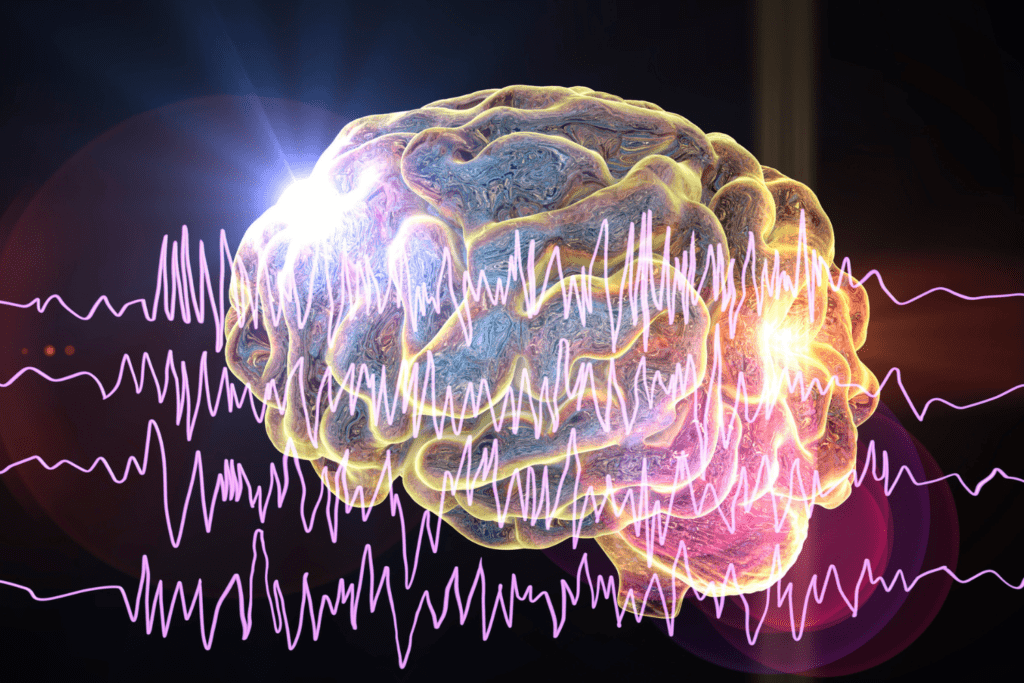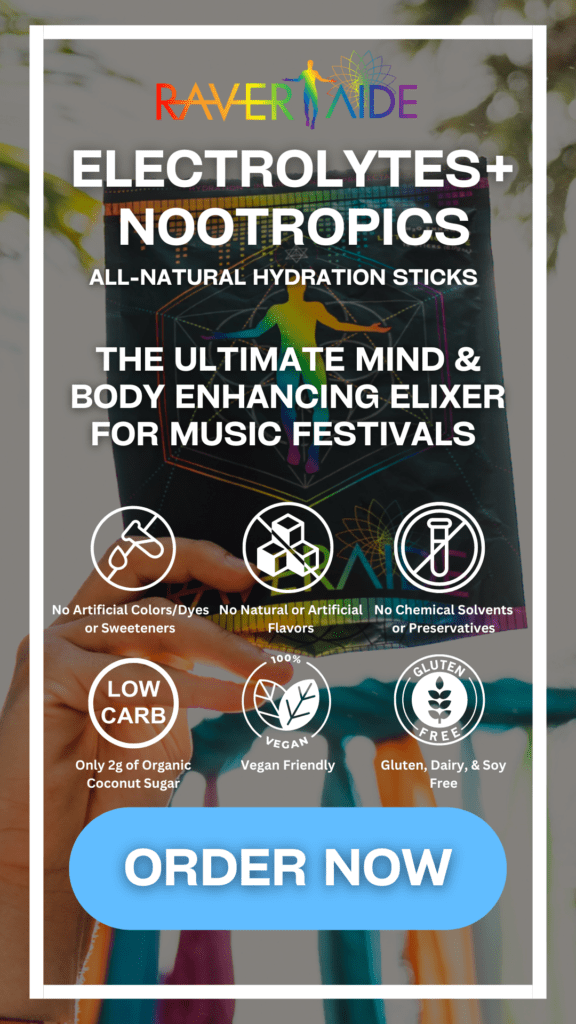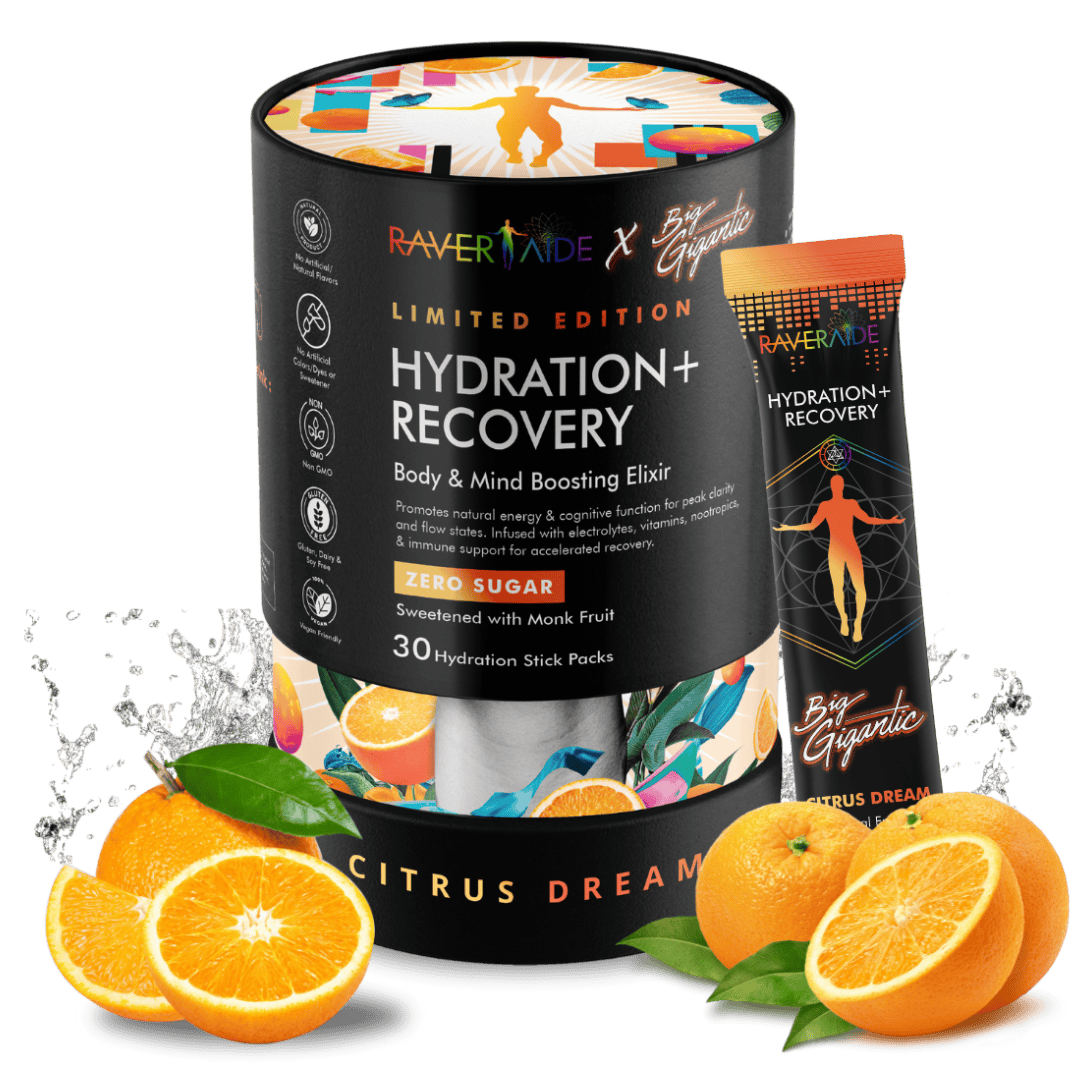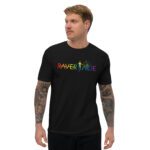BLOGS
17 min read
The Best After Rave Recovery Tricks You Need To Try
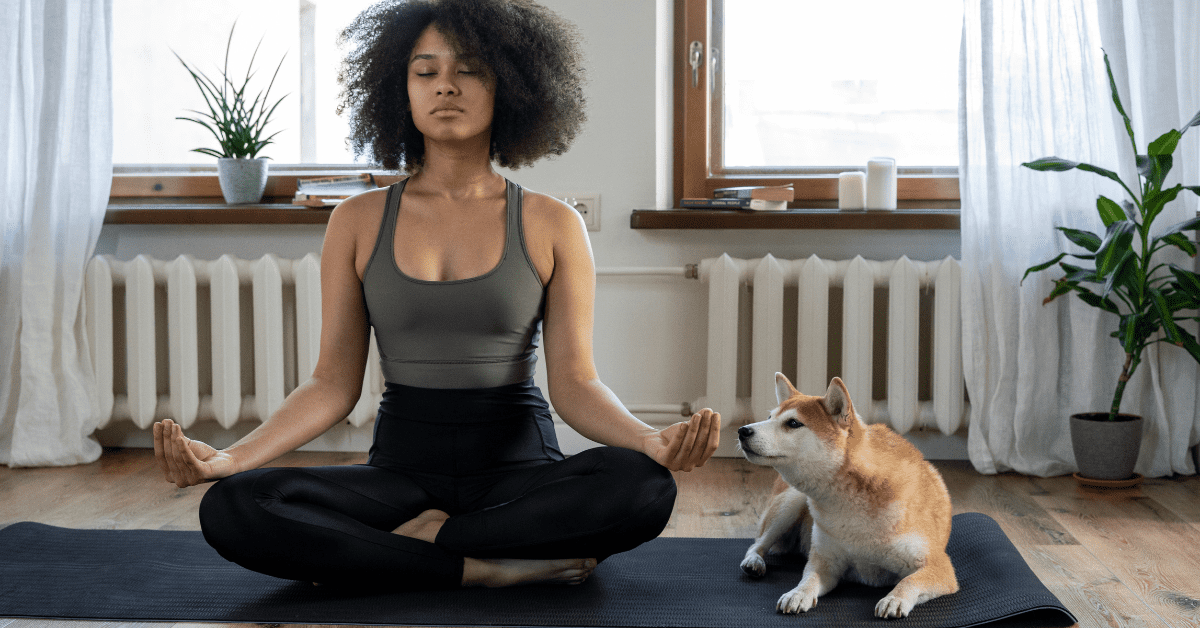
Ready to learn the best after rave recovery tricks that almost NOBODY is talking about?
You could say I’m a bit of a biohacking nerd, and when it comes to after rave recovery, I’ve tried almost every trick in the books.
From supplements, to breathwork, to dry saunas (all of which work incredibly well by the way), I’m a sucker for finding and testing different science-backed methods that can help me recover from those weekend long festivals as quickly as possible.
In this post, I’m going to break down the most important things you need to know about stress & recovery, so that you can be less likely to get sick after festivals & raves, and help your body bounce back a whole lot faster.
I’m also going to share some insanely cool pieces of technology you can use for recovery that have been an absolute GAME CHANGER for me.
Best After Rave Recovery Tricks

How Your Body Deals With Stress
Alright, so before we dive into any of these cool after rave recovery tricks, I wanted to first start by helping you to understand a few key concepts that really tie all this stuff together. The first one is understanding the role of a particular system in your body called the Autonomic Nervous System. This system is comprised of two main components, your Sympathetic Nervous System and your Parasympathetic Nervous System, and I’m going to dive into each one so you can have a clear understanding of how each system works to handle various forms of stress in your body.
1.) Sympathetic Nervous System
On one end, you have what’s called your Sympathetic Nervous System, otherwise known as the “fight or flight” survival mechanism inside of your body. Anytime you enter this mode, there’s a whole bunch of physiological changes that take place that prepare you for a potential threat. Your heart rate elevates, your pupils and blood vessels dilate to send more blood out to your peripherals, and all long term building and repair processes such as muscle growth, digestion, and reproduction are put on hold until your body is certain that the danger or threat has subsided.
Now, as humans have evolved over time, this has been an incredibly important and useful function in the body for keeping us alive, recognizing threats, and immediately responding so that we can live to see another day. The sole purpose of this system is to allow us to get away from that danger, and then bring us back to baseline as quickly as possible. This is called an
Acute Stressor, or a stressor that only lasts until the stimulus/threat is gone. Once we are no longer in perceived danger, we very quickly move out of that state of stress and back into homeostasis.
This is very different from most of the stress we experience in our lives today. Whether it be emotional stress, financial stress, stress in our relationships, these Chronic Stressors typically last for much longer periods of time, leaving us in an ongoing state of “fight or flight”.
When you begin to add on the chemical stresses of various toxins in the food we consume, the pollution in the air we breathe, and all the various viruses and bacteria that we’re getting exposed to every single day, you can see that we are being bombarded from every direction with stress that’s causing us to be in a constantly elevated sympathetic state.
As I just mentioned, when in this state, all long term repair and rebuilding processes are put on hold, as your body enters a catabolic state, or a state of breakdown. While in this state, your body is not able to repair muscle tissue, you’re not able to digest your food properly, and over time, your immune system slowly begins to get more and more compromised.
So, while acute stress is a normal part of human existence, chronic stress has become one of the greatest contributing factors to almost every single disease that we now face as a society.
It’s also important to note that your sympathetic nervous system isn’t inherently bad, just as not all stress is bad. In fact, there’s specific stressors called Hormetic Stressors that are incredibly healthy and beneficial for our body.
Hormetic Stressors are any form of stress that elicits a positive and beneficial adaptation in our body. The best example of this is weight training. You are creating an intentional stressor which causes the body to adapt by building muscle and strength. The dry sauna is another great example of hormetic stress, as it forces your body to adapt by releasing all sorts of important chemicals & proteins needed for optimal health.
However these Hormetic Stressors are acute forms of stress, they’re temporary. The problem with stress arises when we stay in that sympathetic mode for too long. Eventually, our body can no longer handle being in that state, and we begin to experience breakdown.

2.) Parasympathetic Nervous System
Now there’s another component to the Autonomic Nervous System that’s the antagonist to that “fight or flight” response, and that is your Parasympathetic Nervous System. This is otherwise known as your “rest and digest” mode, and is ideally where you want to be spending the majority of your time. This is the state in which all repair takes place in your body, and where all of the healing, all of the growth that’s so essential and vital to our health happens. This is where you enter what’s called an anabolic state, where your body is primed for growth, adaptation and building more resiliency against various forms of stress.
When looking at your own life, I find it helpful to imagine you have two buckets sitting on two sides of a scale. One bucket is your stress bucket, and the other is your recovery bucket.
Each time you experience something stressful in your day, it’s like adding one rock to your stress bucket. Let me give you some examples:
- Are you experiencing stress in any of your relationships?
- Does work or school stress you out?
- Are you exercising and pushing your body at the gym each day?
- Does your diet include pro-inflammatory foods?
- Are you consuming stimulants throughout the day?
- Are you regularly sleep deprived?
- Are you stressed out about finances?
With each “yes”, you’re essentially adding another rock to your stress bucket, and tipping the scale of recovery that much more.
It’s also important to consider your relationship with technology. Are you one of those individuals who wakes up every single morning, and the first thing you do is immediately start scrolling on social media, and begin checking your emails & text messages? Are you starting each day in reactionary mode, instead of giving yourself that time in the morning to prime your mind and set your intentions for the day?
Are you also one of those individuals who has a hard time going to sleep at night because as you lay in bed in the pitch black, you’re staring at a bright screen that’s emitting blue light into your eyeballs, confusing your brain as to whether it’s nighttime or daytime and throwing off your circadian rhythm?
As you’re probably realizing by now, our relationship with technology plays a significant role in our overall stress levels, which is why it’s so important to set healthy boundaries around how you use it.
So as we take inventory of all of these different stressors we expose ourselves to each day, it’s equally important for us to start prioritizing activities into our daily routine that allow us to begin putting rocks back into the recovery bucket to help balance things out.
Obviously getting more quality sleep is the biggest rock, but anything that helps to relax and calm you is a great place to start. Whether that’s meditating, sitting in a warm bath, going for a walk, painting, etc.. make time to prioritize activities in your day that help to slow down your thoughts, and balance out your internal recovery scale.

How Stress Controls Our Thoughts
Now there’s something very interesting that takes place in our minds anytime we’re living in this chronic state of survival. The first thing we have to understand is that when we’re in that “fight or flight” mode, our brains crave the known. It craves certainty and control. It tries to predict outcomes, and will oftentimes seek out the worst case scenario in situations. This is because when we understand and can predict the worst case scenario, that gives us a greater chance of survival. The problem is, our brains don’t understand the difference between some emotional stressor in our relationships or with our significant other, or a real life threat. All it knows is when it’s in that mode, we have to be on high alert for anything that could be potentially harmful to us.
This is why when you’re under chronic stress, you’re often in a highly analytical state which causes us to overthink things. It causes us to replay scenarios over and over inside of our mind. In survival, it becomes difficult for us to go inward and see or imagine any sort of possibility for our life beyond our current circumstances. Because our body’s telling us it’s not a time to create. It’s not a time to go into the unknown because there’s too much uncertainty there. It’s not a time to trust individuals. It’s a time to focus on our external environment and do anything we can to ensure that we do not expose ourselves to anything that could potentially harm us.
Now, this might seem extreme to you as you’re sitting there thinking like, man, there’s not a lot of things out there that are life threatening dangers to me. But the reality is your body does not understand what’s going on in the external environment. It doesn’t understand what’s eliciting the stress response in your brain. It’s only doing what it was developed to do, and what it evolved to do over thousands and thousands of years.
This right here is one of the reasons why it’s so important for us to be mindful of how we manage the everyday stress in our lives. Because not only are we breaking down our body, but we unknowingly are blocking ourselves off from being in a state of acceptance, trust, imagination, and possibility. It makes it difficult for us to be in that state of creation where we can begin taking the actions necessary to start changing these different areas of our life.
This is where the practice of meditation comes in.
And to really illustrate the positive physiological effects that meditation can have on your body, I want to share a studythat was conducted by Dr. Joe Dispenza and a team of researchers in 2016. During the study, researchers analyzed a group of participants at one of Dr. Joe Dispenza’s advanced workshops in Tacoma, Washington.
Saliva samples were taken from each participant as they looked to measure both their cortisol levels (a marker of stress), and a specific antibody protein called Immunoglobulin A or IGA, which is one of your body’s primary defense mechanisms against bacteria and viruses.
Once this was done, they then monitored these individuals over a four day period as they asked them to practice a 10 minute daily meditation where they exchanged the survival emotions of anger, fear, jealousy, and insecurity, for more elevated emotions such as love, gratitude and hope. After the four days were up, researchers again took saliva samples of the group to analyze the changes in those markers.
What they found was that participants’ IGA levels increased by an average of 50% from where they originally started, and their cortisol levels decreased by an average of 16.35%.
So these participants saw a drastic increase in a protein that’s very important for the immune system, as well as a drop in one of the primary markers of stress, by simply taking 10 minutes to calm their minds and express gratitude over a four day period. How crazy is that?!
And while this was a small study, and there’s still a lot more research that needs to be done in this field, this gives us a promising glimpse of what’s possible when we take the time to consciously shift our thoughts from those of fear & survival, to more elevated, heartfelt thoughts of gratitude & love.

A Secret Hack For Calming Your Mind
Now, look, I understand that for a lot of individuals, the practice of meditation can be very, very difficult. The idea of sitting down for 10-20 minutes per day and trying to turn off all these different thoughts that are going on in your mind can feel like torture.
Because of that, I wanted to share with you a cutting edge piece of technology that I’ve been using to hack my brain waves and allow me to get into that deep meditative state with minimal effort. It’s the first ever patented, class 3, non pharmaceutical drug medical device that’s specifically designed to help individuals who struggle with PTSD, addiction, and stress. It’s called NuCalm, and it’s kick ass.
The way NuCalm works is essentially by hacking your physiology with technology to take you out of that chronically elevated state of stress, and take you down into that parasympathetic, “rest and digest” mode. But before I fully dive into the science of NuCalm, I first want to give you a little background on how brainwave frequencies work, because this is a big component of what makes the NuCalm system so effective.
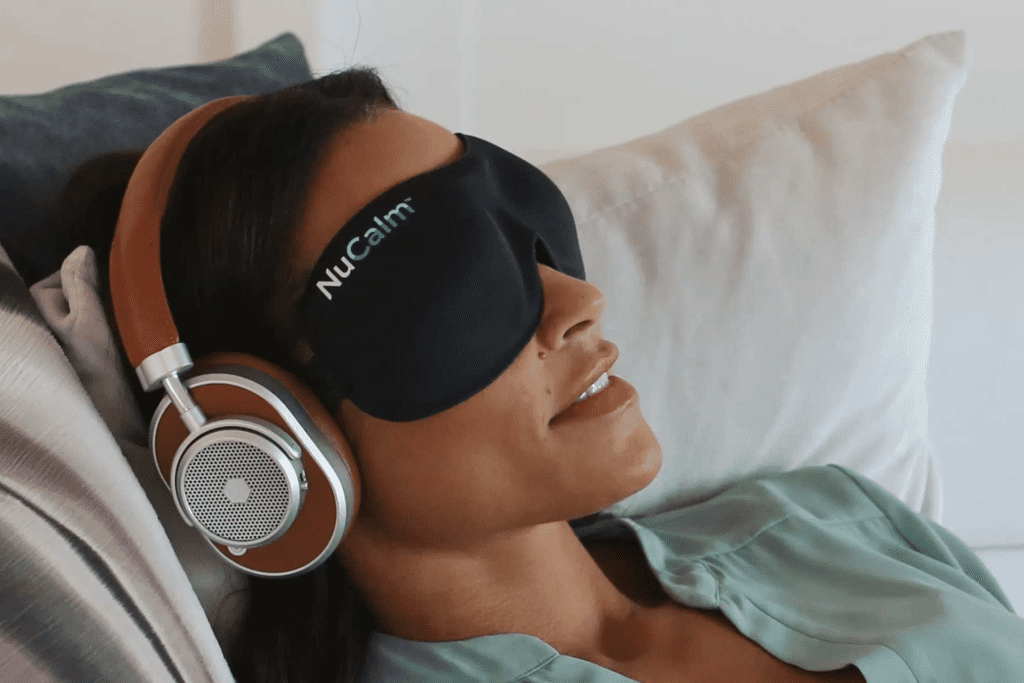
Understanding Brainwave Frequencies
The first thing to know is that there’s four primary modes that our brainwaves operate in.
The first one is Beta brainwaves (12.5-30 Hz), which is your conscious, analytical and thinking mind. Typically throughout your day when you’re thinking or focusing, you are operating between low to mid beta brainwaves. However, at times when you get incredibly stressed out, your brain will move into high beta brainwaves.
Next, right under beta, we have Alpha brainwave states (8-13 Hz). This is when your creativity and imagination are higher, and a lot of people associate this brainwave state to daydreaming. This is essentially when your imaginary world is greater than what’s going on outside around you.
Below that we have something called Theta brainwaves (4-8 Hz), which is where your body is in a deep trance-like, meditative state. Essentially, your body is asleep, but your mind is awake. Many scientists actually attribute the theta brainwave state to the healing zone of the body.
It’s in this relaxed state where your cells go through and clean out their toxins, your mitochondria and ATP is restored, and your body enters a state of restoration & repair. It’s most common for you to enter theta brainwaves states during certain parts of your sleep cycle each night, but it’s also possible to achieve when in a state of deep meditation.
Now, below theta you have Delta brainwaves, which is where you’ve entered a deep, deep sleep. This is where you’re essentially unconscious. You’re not dreaming, you are just completely knocked out.
The Science Of NuCalm
What NuCalm allows you to do, through a combination of chemical and electrical signaling in the body, is alter your brainwave state and manually bring you down into that healing theta zone.
It works to deactivate your “fight or flight” sympathetic response, and through specific neuro acoustic technology that I’ll break down more in detail, slowly transition your brain out of that critical and analytical mind that so many of us spend 99% of our day in. Essentially this piece of technology allows you to enter those healing and rejuvenating brainwave states on command, at any time of the day.
Now, when this company first launched, this product was used specifically to treat PTSD & addiction, and was sold for a whopping $6,000. It came with an eye mask to block out any form of light while doing the treatment, and a specific cream that contained a concoction of relaxing compounds including the neurotransmitter GABA, which is responsible for inhibiting your central nervous system and relaxing the body. You would take this cream, and apply it on the end of two wires that you would then stick on both sides of your neck. From here, the wires would send electrical impulses to stimulate your vagus nerve and deactivate your fight or flight response. This was because the neuroscientists who developed this technology found that in order to get your brainwaves into that theta state, your body could not be a stressed out, sympathetic state. It would reject it.
As I mentioned earlier, when you’re in a state of survival, you need to be aware of any potential threat around you, which isn’t going to happen if your body is in a deep meditative-like state.
So the primary challenge they had to overcome was figuring out how to naturally deactivate the body’s stress response. They first used these electrical nodes, but have since upgraded to what they now call their Biosignal Processing Disk.
Now, while this disc may look like an ordinary sticker, it’s so much more than that. This six layer multi-wave oscillator disc is the result of 20 years of research from a gentleman named Dr. Holloway, the leading neuroscientist at NuCalm, along with his team of neuroscientists.
I know that’s a crazy name and it probably made your head spin, but let me break it down for you.
The important thing to know is that everything operates based on frequencies. Whether you’re thinking of how a microwave cooks food, or how a magnet pulls another magnet towards it, everything responds to frequencies. And a multi-wave oscillator has specific frequencies that impact the cells inside of your body.
So what you do is you take the sticker, and you put it on a specific part of your wrist called the Pericardium 6 acupressure point. What this does is it sends specific signals to your brain to deactivate the adrenal axis in your body. It stops the secretion of adrenaline and it shifts you into that restful parasympathetic state.
Now, the final component of NuCalm is something that they call their neuro acoustic software. This is a form of binaural signal processing, or better known as Binaural Beats.
Binaural Beats were discovered by a German scientist back in 1839, so this technology has actually been around for a long time. They give your brain a specific pattern to follow, that gradually works to manipulate and alter your brainwave state. Since Binaural Beats work by sending different frequencies into each ear, they must be used with headphones as opposed to listening through a speaker.
Here’s an easy way to understand how this all works.
Let’s say for example, that one ear is emitting 512 Hz, and the other ear is at 500 Hz. Your brain will recognize that there’s a dissonance between the two beats, and because it’s always seeking harmony & synchronicity, it will subtract the difference between those two beats and change your brainwave state accordingly. So in this instance it will adjust your brainwaves down to 12 Hz. Make sense?
However, the technology in the NuCalm neuro acoustic software is much more advanced, specifically because our brains are incredibly intelligent at pattern recognition. The problem with most Binaural Beat tracks that you find on Youtube is that eventually your brain will recognize the pattern and stop making those adjustments. It may work the first few times, but eventually that same track will become less and less effective. To solve this problem, NuCalm’s tracks were specifically designed to be non-linear. This means that they’re always changing, and constantly confusing the brain so that you get a predictable, consistent effect every single time.

How To Use NuCalm
So here’s a quick breakdown of how you would actually use Nucalm. You begin by applying the processing disc to your wrist, and laying in a comfortable position. You then put your headphones in, put on your eye mask, and use NuCalm’s app to choose the track you want and the duration of time you want it to play (This is typically anywhere between 20-120 minutes).
At this point, all you need to do is simply relax and take nice deep breaths as the track paces your brain and slowly takes you into lower brainwave states. Once you reach the theta state, it will keep you there for the remainder of the track, until slowly bringing your brainwaves back up at the end of your session.
I can tell you from my personal experience, this one hack has been an absolute game changer. I’m always skeptical of certain technologies like this, but I can tell you that I absolutely feel the difference from these sessions.
The best part about NuCalm is that they’ve decided to make this technology available to the public, where you can get access to this tool for a monthly subscription of $49.99, a whole lot better than $6,000 if you ask me.
If you’re someone who struggles with meditation, sleep, or even just being able to relax on a daily basis, this is a great tool that you can add to your arsenal. It’s great for being able to knock out on plane rides, and is an absolute lifesaver in between days at festivals when you’re completely exhausted and sleep deprived.
I can’t tell you how many times I’ve been wiped out at a festival, running on minimal sleep, and by simply slapping on the NuCalm and entering that theta state for an hour, feel totally recharged afterwards.
They actually say that just 20 minutes of NuCalm is the equivalent of 2 hours of deep, restorative sleep! This really is an incredible, breakthrough piece of technology and I’m very excited to see how it impacts society as we begin to implement more tools like this in our everyday lives.
But listen, there’s one more game changing tool for tracking your sleep, stress, and recovery that I need to share with you while I still have your attention: The Whoop Band.

Using The Whoop Band To Track Recovery
As you’ve learned by now, when the body stays in a heightened state of stress for too long, you become much more susceptible to illness. This is why it’s so common for people to get sick after festivals, as they’ve just spent the last 4-5 days pushing their body to the limits with minimal sleep to help them recover.
When you can track and see how recovered your body is on a day to day basis, it makes it much easier to know when to pull back and take it easy, so you don’t end up getting sick. It allows you to be more mindful of the choices you make throughout the day, such as whether or not you should push yourself during your workout, or give yourself that much deserved rest day. The cool thing is, technology can allow us to easily monitor our stress and recovery levels by tracking something called our Heart Rate Variability, or HRV for short.
Now up until recently, we really didn’t have an effective or accurate way to measure the amount of stress in someone’s body. I mean, let’s face it, stress is subjective, right? You could ask, “how stressed do you feel right now?” But how do you really quantify that?
However, over the past decade or so, HRV monitoring has given us a fairly accurate representation of what our recovery status is on any given day.
Essentially your Heart Rate Variability is a metric that measures how balanced your autonomic nervous system is. It does this by measuring the balance between that “fight or flight” sympathetic state, which causes your heart to beat faster, and that parasympathetic “rest or digest” state, which causes your heart to beat slower. The way you get your HRV score is by measuring the variance in time between individual beats of your heart. When you have a high heart rate variability, this is a good sign as it demonstrates there is a good balance between your parasympathetic & sympathetic nervous system. The lower your HRV is, the more sympathetic dominant you are and the higher levels of stress you have throughout the day.
Now, this might all seem a little confusing to you, but the reality is you really don’t need to know all the technicalities of it. All you need to know is that a higher heart rate variability means that you’re more recovered, while a lower heart rate variability means that your body is more chronically stressed out throughout the day.
One important thing to note is that it doesn’t really matter how your HRV stacks up to a friend or anybody else, because your heart rate variability is based on your individual trends over a prolonged period of time. And so what matters is figuring out what that average HRV is and then using that as a baseline to determine if you are above or below that on any given day.
This is a very individualized metric, and there’s a lot of different factors that can affect your HRV score including how hard you’re training, what your diet looks like, your quality of sleep, your age, gender, genetics, and many other things. This means that the only person you should ever be competing with is yourself.
The cool thing about the Whoop band is that it will collect data for you, without you having to even think about it. After a few days of wearing it, the band will begin to establish a baseline for where your HRV typically is, then will give you scores each day of how recovered you are from the day before. This comes in handy for helping to identify certain patterns in your daily routine that either positively or negatively impact your score.
In addition to this metric, the Whoop also gives you feedback in other important areas such as your sleep, resting heart rate, respiratory rate, and skin temperature. These tools are incredibly useful for catching an on-coming cold before you actually get sick. You might see increases in your resting heart rate, respiratory rate, and skin temperature, which tell you that you need to CHILL OUT before you come down with a full blown sickness.
When you can physically see what’s going on inside your body, I believe it gives you that extra bit of motivation to make smarter choices when you really need the rest (especially on day two or three at a festival). As someone who used to push my body a little too hard at festivals, this tool has made a huge difference in helping to reduce my likelihood of getting sick afterwards.
I’ve tried other tools like the Oura Ring to help track my sleep and recovery, but I personally prefer the Whoop much more. For starters, the Oura Ring is much more expensive upfront, with their cheapest version costing $300. The Whoop however, is an ongoing monthly membership that costs $30/month. Obviously if you’re going to keep it for a long time, the cost eventually surpasses the Oura Ring, however it’s much more manageable to get started with if you simply want to try it out.
Another thing I prefer about the Whoop is it doesn’t get in the way while I’m working out. Sure, the Oura Ring looks cool, but if I have to take it off every time I lift weights then it’s not really that functional for me. For me, the Whoop has been a better option, but I’d suggest doing your own research and finding the tool that works best for you.
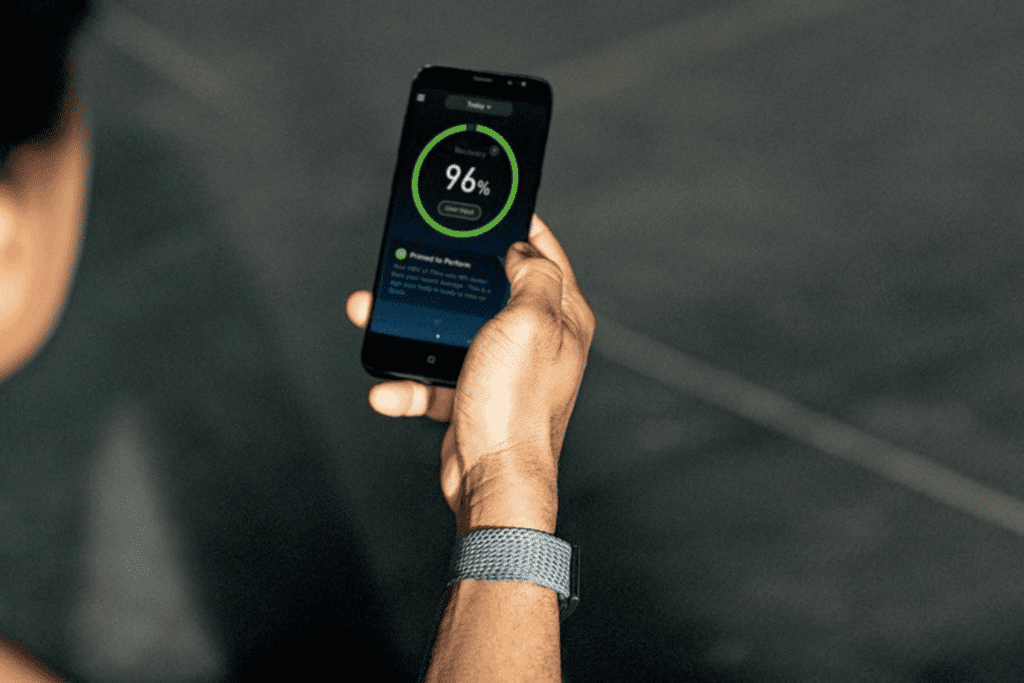
One last thing I have to mention. If you do end up getting a Whoop yourself, make sure you join our Raveraide Rave Shaman community on the app. One of the coolest things about Whoop is the community feature that they’ve built in, which allows you to see and compete against your friend’s scores inside of your group. To make things fun, we’ve created one that anyone can join by simply using our team invite code COMM-1AA327. We look forward to seeing you inside of our community!
Want to read up on our favorite strategies for improving your mental health and recovering faster after raves & music festivals? Check out these posts:
- Using Breathwork For Post Rave Recovery
- Using Dry Saunas To Help With Post Rave Depression
- Using Cold Exposure To Beat The Post Festival Blues
- Using Fasting as a Secret Hack For Post Festival Recovery
- 13 Rave Recovery Ingredients Inside Raveraide That Will Help You Bounce Back Fast
This post was all about the best tools & trick for after rave recovery.
Share This Article
Follow Us On Social
Instagram
Tiktok
Facebook
Spotify


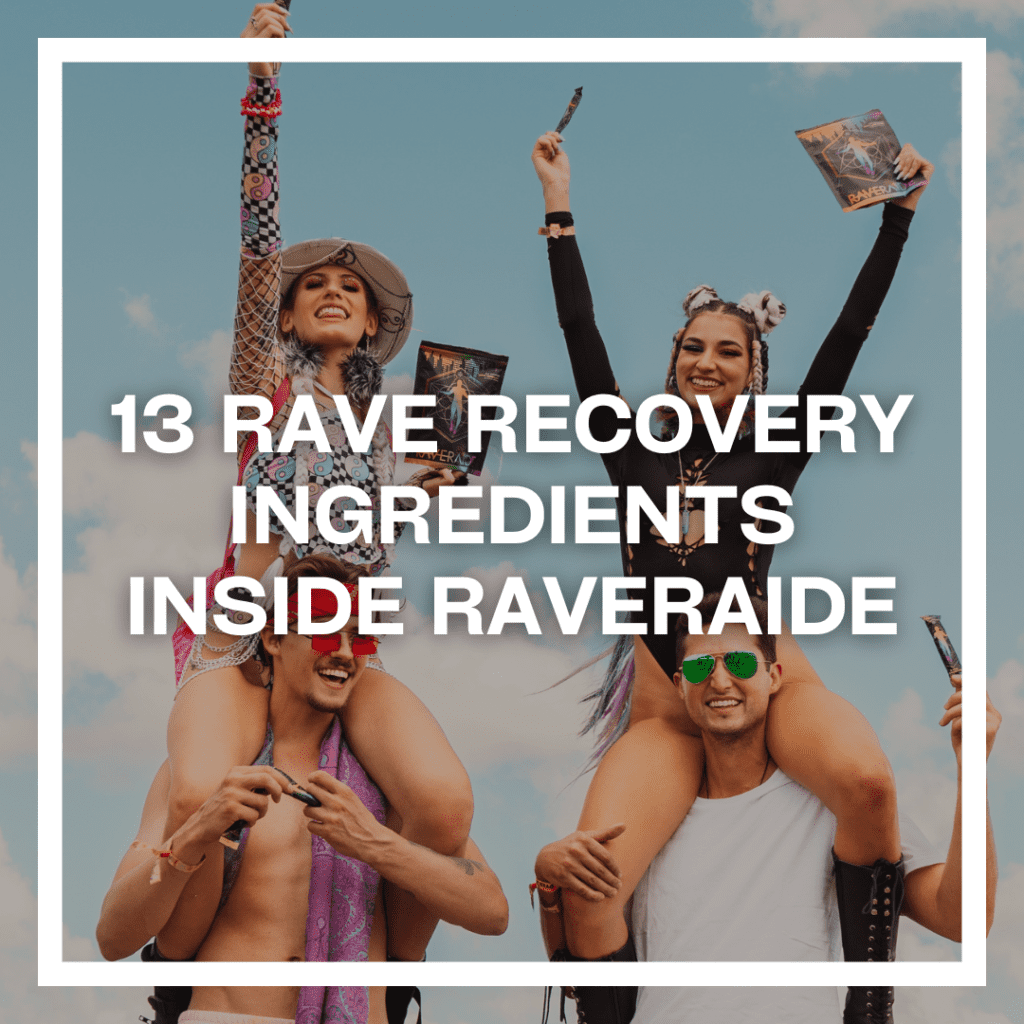



Recent Posts
Related Products
More Stories

Copyright © 2022, RAVERAIDE
